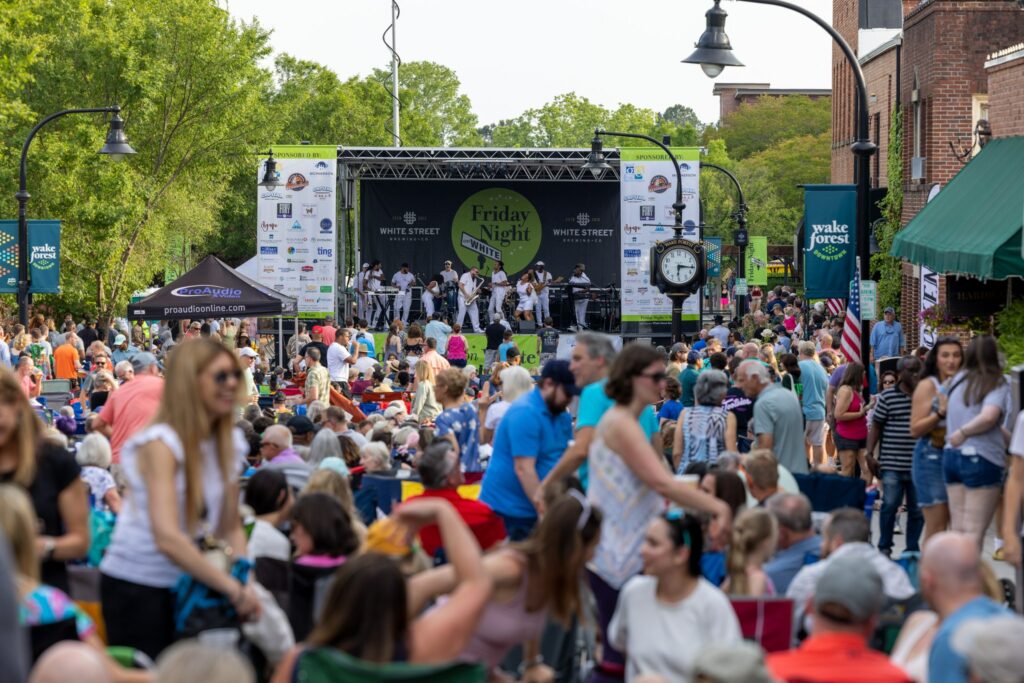Friday Night on White: A Key Step to Revitalization
go.ncsu.edu/readext?938996
en Español / em Português
El inglés es el idioma de control de esta página. En la medida en que haya algún conflicto entre la traducción al inglés y la traducción, el inglés prevalece.
Al hacer clic en el enlace de traducción se activa un servicio de traducción gratuito para convertir la página al español. Al igual que con cualquier traducción por Internet, la conversión no es sensible al contexto y puede que no traduzca el texto en su significado original. NC State Extension no garantiza la exactitud del texto traducido. Por favor, tenga en cuenta que algunas aplicaciones y/o servicios pueden no funcionar como se espera cuando se traducen.
Português
Inglês é o idioma de controle desta página. Na medida que haja algum conflito entre o texto original em Inglês e a tradução, o Inglês prevalece.
Ao clicar no link de tradução, um serviço gratuito de tradução será ativado para converter a página para o Português. Como em qualquer tradução pela internet, a conversão não é sensivel ao contexto e pode não ocorrer a tradução para o significado orginal. O serviço de Extensão da Carolina do Norte (NC State Extension) não garante a exatidão do texto traduzido. Por favor, observe que algumas funções ou serviços podem não funcionar como esperado após a tradução.
English
English is the controlling language of this page. To the extent there is any conflict between the English text and the translation, English controls.
Clicking on the translation link activates a free translation service to convert the page to Spanish. As with any Internet translation, the conversion is not context-sensitive and may not translate the text to its original meaning. NC State Extension does not guarantee the accuracy of the translated text. Please note that some applications and/or services may not function as expected when translated.
Collapse ▲Written by Emily Prickett, Parks, Recreation and Tourism Major
When reading the fact sheet, Working Together: A Guide to Collaboration in Rural Revitalization, many similarities sparked my interest and reminded me of the town of Wake Forest. Discussed in the work, “Successful collaboration” is described in three parts to deconstruct the components of “economically prosperous communities” and how to achieve such a goal. Coming together is the first step described by finding “a sense of place and community, shared concerns, and common interests.” Using location as a means of bringing people together provides many avenues to creating commonalities in communities. This can create personal connections among members and their efforts. Secondly, shared concerns bring people together to define those problems and attempt to make goals to make improvements. A sense of responsibility for the community forms collaborations to seek solutions. Finally, creating a shared vision from common interests allows community members to see the bigger picture and focus on the long term. They are able to overlook their differences and work together towards the overall mission of their efforts. This also leads to a shared sense of accomplishment that brings the group together and builds relationships.

The crowd at a Friday Night on White Event
Image Source: Town of Wake Forest Facebook Page
In 1956, Wake Forest University left its original town and relocated to Winston Salem. This deprived the rural community of Wake Forest of its former identity as a college town. After a couple of decades, community members gathered together out of concern for the decreasing number of residents and increasing concern for their economy. Defining the problem brought together an organization dedicated to pursuing a solution. Wake Forest Downtown Revitalization Corporation, run by local volunteers, made it their mission to maintain and develop the integrity and individuality of the town and community. Recently joining the Town of Wake Forest, the non-profit changed its name to Wake Forest Development, Inc. Their committees for Main Street use a four-point approach to making Downtown Wake Forest into a “vibrant, thriving community.” These include organization, promotion, design, and economic vitality. The committees understand the power of place and look to utilize Wake Forest and its members to make the most of this strategy. Jennifer Herbert, Downtown Development Manager for WFD Inc, heads one of the largest events to promote the town. Friday Night on White runs throughout the summer and incorporates live music, local food and beverage, and other activities. Growing in popularity, it has brought community members together to socialize while drawing in new visitors to the area and looking for a way to experience the unique aspects of Wake Forest all in one event. It has brought a containable nightlife that preserves the quality of the town by keeping it manageable and bringing in a younger and livelier demographic. This example is one of many ways that the Town of Wake Forest is trying to reach its goals by working hand in hand with the community members who share the same vision.
For more information on visit the Wake Forest Downtown Inc Website here.


